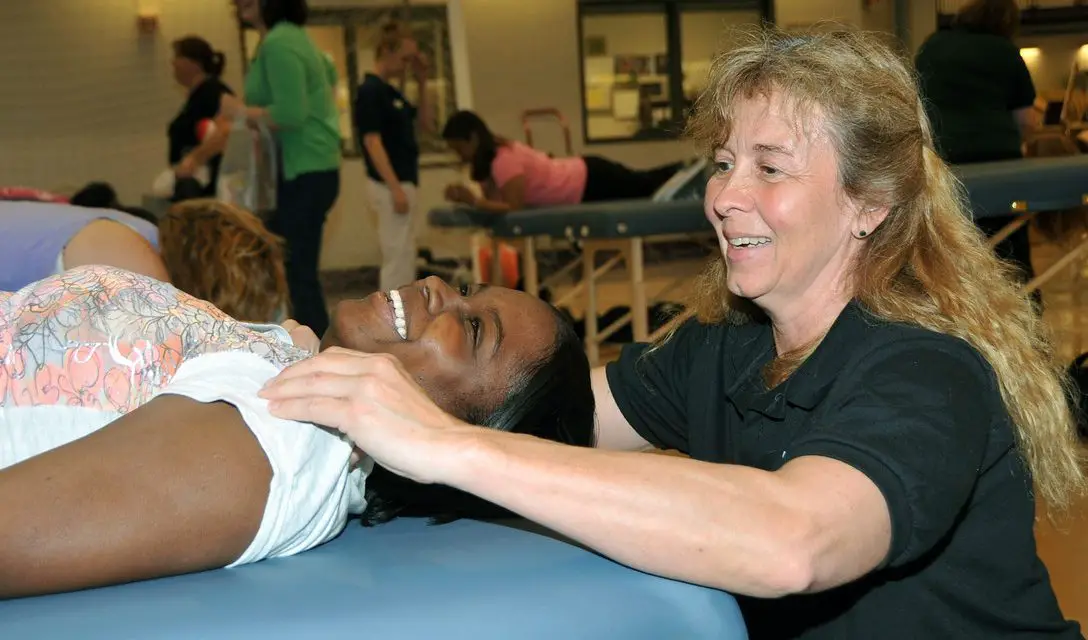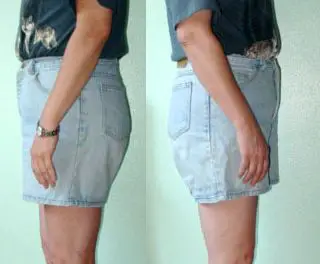We talk a lot about massage therapy as a healthcare profession, but are we really making any progress toward that goal?
When I graduated massage school in 1992, we were deeply enmeshed in the passionate arguments you still find online about whether “energy medicine” has anything to do with massage therapy and its licensing and regulation or not. (1) Twenty-plus years later, we are still having exactly the same arguments and are no closer to settling the question than we were then. Contrast that with the real progress that other healthcare professions have made in understanding of conditions and development of effective treatments in their scopes of practice. How many real, modern, and patient-centered healthcare professional disciplines still cannot agree on basic facts — such as whether reality exists— almost 25 years later? One of the reasons that we are not making rapid progress together is that we don’t all agree that becoming a real, modern, and client/patient-centered healthcare profession should be our goal.
A team has to have a commitment to the same mission in order to successfully accomplish that mission. Right now, massage therapists are divided among some stakeholders who want to do the work that it takes to become healthcare professionals, and other stakeholders who don’t want to. Our leadership and our professional organizations are hamstrung trying to satisfy constituencies who want to move in opposite directions. Inaction prevails, favoring the status quo, and—as long as we lay claim to the title of healthcare professionals without doing the necessary work—our clients lose out in this scenario.
The ancient Greeks had a word for it: ἀπορία, pronounced “aporia”, and meaning “impasse” — a complete blockage or deadlock in our path — preventing any further progress on our metaphorical journey. The Argentinian philosopher Mario Bunge identified five characteristic commitments to principles of healthcare professions, and every single one of them represents an aporia that the massage therapy profession cannot agree upon.
As long as that situation remains true, we will stay stuck in interminable arguments that get us nowhere, and our clients will be left waiting for a massage healthcare profession that never arrives. For the benefit of our clients, we need to get unstuck on these issues.
Aporia 1: Why Massage Therapy Needs Realism
Realism is a commitment to the philosophical principle that objective reality exists, independent of the minds of the observers (us). The opposite viewpoint — that there is no objective reality apart from our minds — is referred to as anti-realism. This is an aporia because realism and anti-realism contradict each other. They cannot simultaneously be true. One principle is correct in the scope in which healthcare professionals operate, and the other one is in error. Although the embodiment of our minds means that our perceptions are unreliable — which, in turn, makes it impossible for us to be fully objective — we can, nevertheless, objectively figure out some things in part about the world around us.
One of the things that we can discern is that if there were no objective reality, then illness and suffering would be imaginary—“all in your head”—or it would be a social failing rather than a real condition. Too many people who live with complex and chronic conditions have experienced having people deny their illness burden in that way. How many people living with depression or anxiety have you heard of who report being told to “get over it!”, “just do it!”, or “quit being so lazy”? This is how people are often treated when illness is regarded as not real.
Mainstream healthcare professionals have formed the consensus that realism is the philosophical commitment that is most highly consistent with the integrity and ethics of professionalism. Massage therapy, however, has a great deal of sunk costs invested in anti-realism, as this single example of many courses from the National Certification Board for Therapeutic Massage and Bodywork (NCBTMB) continuing education (CE) provider search demonstrates.
One example of many courses marketed to American massage therapists as approved healthcare continuing education by NCBTMB: Louise Hay teaches that birth defects are “chosen” by a soul “seeking to learn lessons” in life, a viewpoint that is not only the most extreme kind of victim-blaming, but is actively at odds with scientific anatomy, physiology, pathology, embryology, teratology, genetics and microbiology. Louise Hay is used in a popular introductory textbook on psychology as an example of anti-rational and magical thinking to be avoided. (6)
If we desire to be on the same client-centered healthcare professional team with psychologists and social workers. For example, using the well-documented effectiveness of massage therapy to relieve anxiety and depression in populations of veterans and refugees living with PTSD, how do we justify alienating those other professionals by uncritically offering teachings such as Hays’ with the official approval of our professional certification body?
We can’t justify it. But given the sunk costs of anti-realist teaching materials, the critical shortage of massage teachers who are qualified to teach from a reality-based point of view, the personal investment of self-efficacy and personal validation by massage therapists in magical and wishful thinking, and the lack of motivation of the massage leadership establishment to bring up the problem to address, massage education will continue to be mired in anti-realism for the foreseeable future.
As a result, clients will not be able to depend on that wherever they are in the U.S. They cannot reliably expect any massage therapist they seek out to have a modern healthcare professional education. So we will remain in this aporia unless and until the costs of remaining there become more painful than the change will be.
Aporia 2: Why Massage Therapy Needs Materialism
Materialism is a commitment to the philosophical principle that everything in nature is made up of matter and interactions among material things. (Sometimes people confuse the term of art “materialism” with “consumerism”, which is a focus on accumulating material consumer goods and services. But we are committed to interdisciplinary understanding here, and so we use the terms as others with whom we want to work understand them.)
Materialism is one type of monism, the principle that everything in the universe is made up of the same stuff. There are multiple anti-materialist viewpoints, and they are a type of dualism—that the universe is made up of different kinds of fundamental things that are nothing alike.
This is also an aporia because materialism and anti-materialism contradict each other. They cannot simultaneously be true. One principle is correct in the scope in which healthcare professionals operate, and the other one is in error.
Back when we used to believe that mental, psychological, and neurological disorders, such as schizophrenia and epilepsy, were disorders caused by spirits and demonic possession, we carried out unspeakable horrors in the name of treatment to people suffering from those conditions.
In the early 1800s, when Phineas Gage survived a traumatic brain injury, modern neuroscience began to recognize that the evidence showed that that these diseases—and the processes and phenomena associated with them, such as mind, consciousness, and personality — were linked to material anatomical structures in the brain. No one, of course, is claiming that the treatments resulting from a materialist approach are perfect.
There are still many things that we don’t know how to treat well, and some effective treatments have truly awful side-effects associated with them. Materialism doesn’t mean that we just shrug off those facts. We continue to work to make them better. But modern healthcare committed a long time ago to the principle of material causes of illness, and the fact that massage therapy has not yet made that commitment is blocking our participation in interdisciplinary teamwork.
All of the same issues mentioned previously under realism: sunk costs in anti-materialist training materials, a critical shortage of massage teachers who can teach from a modern biomedical materialist point of view, massage therapists’ own personal validation invested in anti-materialist ideas, and so forth. These indicate that this aporia is just as likely to remain stuck for the indefinite future as well.
Aporia 3: Why Massage Therapy Needs Science
Bunge actually uses the word “scientism,” a technical term of art that’s likely to introduce some confusion here. What Bunge means by “scientism” is different from what other users of the term often mean. While it’s often used to mean excessive reductionism, misapplication of scientific authority, insistence that only what is measurable is meaningful, anti-humanity, science idolatry, or uncritical deference to science, Bunge means simply that the methods and practice of science are universal, and that empirical science is the most reliable way to gain valid knowledge about our natural and social worlds — a claim not nearly as controversial as the term is.
In the same way that “materialism” means “consumerism” in some circles, “scientism” has so much baggage in massage therapy circles that using the word “science” here is truer to Bunge’s meaning. Opposition to science in massage therapy circles that prevent interdisciplinary team-building include: active antagonism to science; indifference to and/or unawareness of science; and science denialism.
Active antagonism to science includes examples of massage therapists acting out of scope and advising their clients to stop taking medications, or to avoid cancer treatments, or to not vaccinate children against preventable infectious diseases in favor of “natural remedies.”
In addition to the obvious reasons why these stances put additional burdens on people dealing with illness, and alienate potential colleagues, they are unsound and incorrect, in addition to being very far out of scope for massage therapists. Other healthcare professionals have made it clear that they would welcome working with massage therapists to promote public-health efforts such as vaccination and screening awareness. (2,3)
The question is whether we are willing to walk through that open door. Indifference to and unawareness of science and science denialism make massage therapists vulnerable to misrepresentations of science, whether those misrepresentations are deliberate or simply in error. One of the jobs of a healthcare professional is to protect clients from incorrect or misleading information.
When courses such as the following receive an official imprimatur as “Advanced Sciences” or “Research” approved CE from a massage therapy national certifying organization, then it is quite understandable why many massage therapists cannot tell the difference between what is science in reality, what is pseudoscience, and what are buzzwords and word salad masquerading as science.
Of all the issues for the future of healthcare professionalization of massage therapy in the U.S., this one may provide the most acute obstacle. Without a shared knowledge base of biomedical science, massage therapy will never have a place at the table as a full-fledged member of the client-centered professional healthcare team.
Even without massage professional organizations promoting pseudoscience, there are simply not enough science-literate massage teachers to address the therapists’ science education needs. This gap means that there is a great deal of dogmatism (refusal to change established beliefs in the face of contradictory evidence) and ontological and epistemological nihilism (the beliefs that reality does not exist and that knowledge is impossible, so there is no meaning to anything).
Aporia 4: Why Massage Therapy Needs Systems Thinking
Systemism, as philosopher Mario Bunge uses it, means examining everything as either a system itself or a component of a larger system with its emergent properties (where the whole is more than the sum of its parts) as appropriate. He contrasts this approach with individualism, which he defines as the composition of social systems, and with holism, which he defines as their structure.
Too much focus on individual components of a system and you miss the relationships among those components. Holism, on the other hand, errs in the opposite direction: it looks at the overall structure, but it skips the necessary focus on crucial details (often rooted in the underlying biomedical sciences).
Have you ever heard a massage therapist say that he or she offers a holistic approach, customized to the needs of the particular client on the table? It is a very common claim, but what is much less common is the ability to explain in specific and concrete terms exactly what that means. What does the therapist do differently for different clients and why? How does the therapist know when to change to something different? Systemism is the process of discerning what level of component or overall structure (including interactions) is the appropriate level of analysis to focus on to meet the needs of a particular situation.
One highly-relevant example is the way that some very visible individual massage therapists are performing massage therapy in some hospitals and clinics, and how that is being used as “evidence” that the therapist is making gains as a healthcare profession. But is it really? Are they being paid market rates for their work? Because being permitted to work for free is not the same as being respected as a valuable professional.
If they are being paid, is the institution paying them or is it self-pay by the patients? That, too, is an indicator of how much the work is valued by the institution in question — committing funds to pay for massage therapy for patients is a much more profound statement about the therapists’ role on the team and in the system than is just not getting in the way of patients writing their own checks in the same way they would pay for other ancillary services.
The fact that some hospital administrators have figured out that some patients will self-pay for massage therapy, and that other therapists will give their labor to the hospital for free is not at all the same thing as increased systematic acceptance of massage therapy as a genuine healthcare profession. Similarly, many of the issues that involve the way that a profession interacts with clients or patients and with society take place at the systems level, yet massage therapy has a tendency to treat them as though they are an individual-level issue.
The ultimate effect is to privilege a kind of social Darwinism, where, for example, the number of therapists who drop out of practice after completing their education is treated as the fault of the therapists themselves for not being entrepreneurial enough, rather than a systems problem of massage therapy not being a universally reliable path to a secure middle-class healthcare professional income in the U.S. the way it is in the regulated provinces in Canada. (4)
As the population ages, we are faced with more and more clients living with the complex effects of chronic conditions, such as diabetes, heart disease, cancer, substance dependency/addiction, and obesity. Massage education in the U.S. prepares some therapists to make a very good living at marketing themselves to individuals, but it does almost nothing to address the systems-level issues of educating them in top-down and bottom-up approaches to the biopsychosocial aspects of health and illness, including environment, activity, nutrition, and public health.
These systems-level aspects are explicitly addressed in a rigorous and factually-correct way in Canadian massage therapy education in the regulated provinces, but there is no evidence on the part of the U.S. massage therapy establishment to address the critical gap in our education that would address them here. Until massage therapists are prepared as a group to participate in meaningful ways in public discussions and implementations of civic policy — such as access to healthcare — then we have a systems-level delivery problem in our professional education.
Aporia 5: Why Massage Therapy Needs Humanism
Humanism in healthcare is a commitment to the principles that the dignity and value of human beings is the highest concern for healthcare professionals, and that reason, evidence, and critical thinking are better than dogma and superstition when it comes to deciding on the best practical ways to promote human dignity and value. It aligns very well with the healthcare ethics principles of respect, dignity, and justice.
It has long been recognized that a socially-granted power differential exists between healthcare practitioners and the clients/patients whom the treat. Accordingly, they are expected to actively take steps to not use that power differential to take advantage of clients’ vulnerabilities. Overpromising results to people who suffer from the effects of infertility is a perfect example of the kind of behavior that healthcare professionals are expected to refrain from, yet it is officially approved by NCBTMB.
While it is well within the realm of plausibility that—to the degree that the condition causing infertility may have a component of personal stress—massage may provide some degree of stress relief, thus indirectly having some immeasurable positive effect on overall health, calling crystals “fertility treatment” and massage a “fertility enhancing protocol” is to way overstate the facts, and to overpromise on what they can deliver.
For massage therapy to embrace humanism, we would have to decide that protecting our clients against false claims and overstatements is more important than permitting the individual therapists to make as much money as they can marketing their services in this way. That change is unlikely to happen anytime soon, as it would require a real cultural shift, and there is no one in the massage therapy leadership establishment advocating such a shift in culture.
“Caveat emptor” for massage claims—while no motto for a real healthcare profession motto for a real healthcare profession—does not show any signs of going away anytime soon. While the community colleges offer a not-for-profit alternative—offering the prospect of shifting away from “caveat emptor” to an education more aligned with other mainstream healthcare professionals, whose educations also tend to be at not-for-profit institutions—it is an open question whether the community colleges will be enough of the market to represent a significant influence in massage education.
By contrast, Canadian public health and preventive care is an explicit part of the massage therapy curriculum in the regulated provinces. (5)
Solutions, If We Really Want Them
We need to decide where our commitments really lie. Do we really want to do what it takes to be a healthcare professional? If so, then we need to commit to the five principles that Bunge identified.
We need to quit looking to our clients for our own validation. Instead, we should find out what our clients and potential allies really want. Also, we need to commit to shared healthcare professional knowledge base. We need to actively decide the terms of the social contract we want to be a part of and engage with society in order to get those terms.
We need to think strategically, and if necessary, be prepared to go separate ways. Remember, we can split into different groups and we can form alliances on issues of common interest. We also need to take actions that are consistent with our clients’ interests. Learning from other professions’ successes and mistakes are most instructive in this way. The Canadian model demonstrates that massage therapy can operate as a mainstream healthcare profession, and learning from how they did it will keep us from needing to reinvent the wheel.
References
1. Moyer, Christopher A. When will massage therapy believe in itself?
2. Downey L, Tyree PT, Huebner CE, Lafferty WE. Pediatric vaccination and vaccine-preventable disease acquisition: associations with care by complementary and alternative medicine providers. Matern Child Health J. 2010 Nov;14(6):922-30.
3. Downey L, Tyree PT, Lafferty WE. Preventive screening of women who use complementary and alternative medicine providers. J Womens Health (Larchmt). 2009 Aug;18(8):1133-43.
4. Stephens, Ralph. Where Did All the Graduates Go? Massage Today. November 2012.
5. College of Massage Therapists of British Columbia. CMTBC Guidelines for Foundational Knowledge in Massage Therapy Educational Programs.






